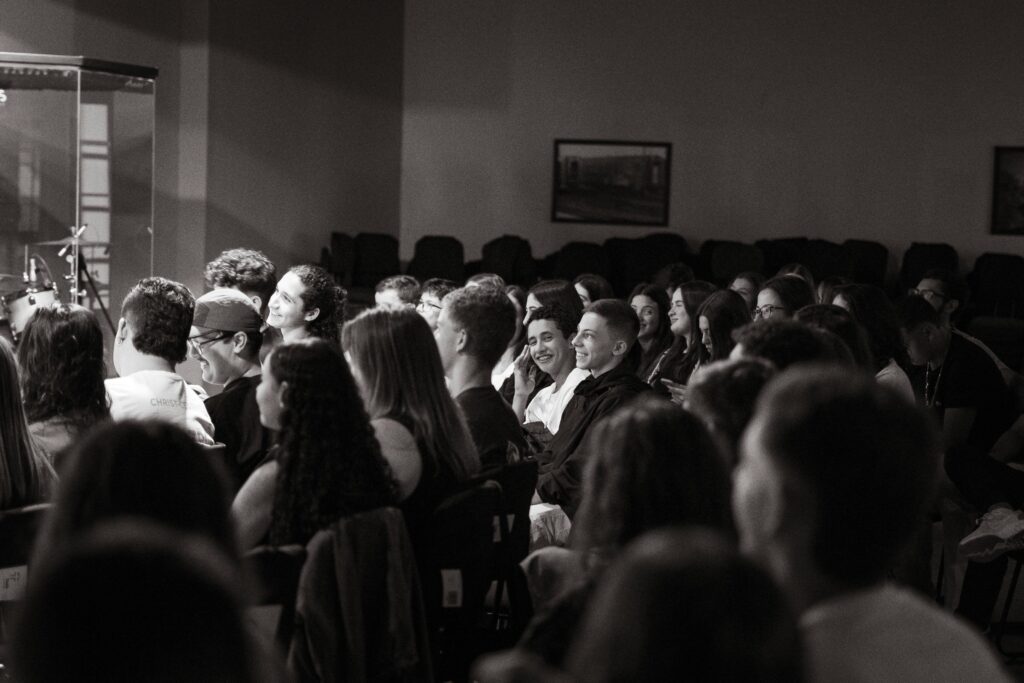What are Your Children up to on the Networks?
Familiarization with Concepts

Here is Maria Elena Marsal’s article “Do You Know What Your Children Are Up To on the Networks?,” published in Protect Your Heart, prime-time program in the education of character and sexuality in Europe and Latin America.
* * *
One Sunday just as any other, Susan and Alfred were working in the garden together when suddenly they heard their 13-year-old son Roderick come down the stairs angry and went straight to them and said: Mommy, Daddy, Benjamin has used a fake account to annoy me!
Benjamin, 11, came down behind his brother saying: Roderick has a Finstagram account; he and his friends are haters and I only wanted to stalk him.
You don’t know anything about that; we are not haters! We only uploaded some memes and we don’t want all our followers to know what we do, answered Roderick.
It’s not true!, retorted his brother. I’ve seen that you also troll some accounts.
Susan and Alfred were speechless; in the first place, because there was a conflict between their sons, which they didn’t understand altogether. And, in the second place, because certain words called their attention a lot and they didn’t understand what they were talking about.
What is Finstagram and what is it for?
Many parents are still familiarizing themselves with the word Instagram, which is a social network very much used by adolescents to upload photos and videos.
Finstagram is nothing other than a parallel account on Instagram. The word is made up of the <letter> F (of fake) and Instagram, and adolescents use it to publish things they wish to share with their friends and peers but not with their parents and relatives,[1] so they only accept certain select people on their Finstagram, and on their Instagram they accept all others and even have a public account.
Some adolescents publish on their official account what their “finsta” is and vice versa. Other adolescents keep it in secret but their friends know of the existence of that account and use it.
Another variant of this situation is a fake account. Some adolescents pass themselves off as persons they are not, either as a joke or to do things they wouldn’t do with their own accounts, such as spreading data or photos of other adolescents or to stalk them.
Susan and Alfred had no idea that this existed and that their children had this type of account. Moreover, they were not familiarized with other terms, such as hater, memes, troll, followers, stalk.
Concepts
This generation uses other terms, but at the bottom, many concepts are the same. Both millennials (born at the end of the 80s up to the mid-90s), as well as the Z generation (born towards the end of the 90s up to 2010 approximately), use new words to communicate with one another, especially because they have a great knowledge of the networks and the use of technology. There are many articles online on the subject, which can be of help to parents to be able to understand better the language of their children.[2]
In some cases the words refer to new concepts, such as followers (followers on the networks), app (abbreviation of application or program for cell phones), insta (diminutive of Instagram), however, others refer to already known concepts, which have to do with the character and personality of their children, and that it’s good to continue addressing with them.
Some of the new terms are haters, which are people that dedicate themselves to spread hatred through the networks, either criticizing someone or something. This attitude is often related to cyberbullying (bullying through the networks). As we see that the means used is new but the attitude is already known. Another term used is troll, which means to sabotage, make a joke or generate confusion to amuse oneself. It’s the typical joker but who sometimes makes heavy or bad taste jokes, which can harm others. The word meme refers to a photomontage or image that shows the humorous side of a situation.
These and other terms used by adolescents describe their actions on the networks and, although it’s good to learn them and know what they stand for to understand what they are talking about, what is important is to talk with them about the attitudes they should have, either applied in the realm of the social networks or not, because at present their identity is not only conformed by what they are and do in their real life, but also by what they do on the networks.
What is Digital Identity?
Charo Sadaba, Dean of the Faculty of Communication of the University of Navarre says that everything that we share on the social networks leaves a digital mark on us[3] and that allows any person to collect our information and build an identity about us.
Adolescents believe that they themselves make up their digital identity, however, others also take part in its creation when images or videos are uploaded, labeled or comments are made on their friends. Digital identity is also built through what “I like” as, for example, if they give like to a publication of a foods place, which can lead to deduce that they have gone to that place or that they like that type of food, in other words, with all that they do on the networks they are giving out data on themselves without realizing it. That’s why it’s necessary to know what they do on the networks and what others do, with relation to them on the networks,[4] is what Guillermo Canovas advises us, who is the Director of Educalike.
The consequences of other people having an idea about how our children are from what they publish on the networks can be various. One of them could compromise their academic or job future, for example, if a future boss or someone in charge of scholarships would investigate them and find images of them that give a verisimilitude of their identity in a negative way, and for that reason they discard them. Another possibility is that that information is used to harm them and their families directly.
Adolescents are not conscious of the formation of their digital identity, and therefore we, their parents, must make them realize it, as our parents did with us, although in another realm.
The best way is to have conversations with them about these subjects to help them understand the consequences of their acts.
Everything They Do Has Consequences
A key idea to transmit to adolescents is that all that they do will affect their person, regardless of the profile from which they do it. To criticize, defame, insult or make jokes in bad taste about others is something they must avoid because it doesn’t help them to grow and be better persons, regardless of whether someone knows that it was they who did it or not. Moreover, that harms other people and in some countries, they are already considered crimes punishable by law.
To share all sorts of images, contents, memes, and likes on the networks, can have consequences; therefore, it’s important to help them to reflect on their actions so that they are able to analyze things before acting.
What Is Published, Stays Published
Thanks to technology, there are screenshots, that is, all conversations can be taken and transmitted, just as likes, the people they follow on the networks, the personalities they like, “instantaneous” photos and videos can also be taken and sent. Once something is on the networks, it’s very difficult to know what reach it will have, therefore, it’s good to be prudent when it comes to publishing and to being responsible in the use of the social networks.
Susan and Alfred realized that they were very foreign to the situations their sons were experiencing, so far from those they lived in their youth. What is positive is that very many tools exist now to help them. Susan is determined to learn how to use the networks and to be a follower of pages that keep her informed on the latest tendencies. Alfred has decided to spend more time with his sons, so that Roderick and Benjamin are more connected as brothers in the real world than in the virtual. As a family, they all decided to educate themselves in the positive and conscious use of the social networks and new technologies.
And do you now know if your child has Finstagram?
[1] https://empantallados.com/noticia/8171/
[2] Iwomanish by Maria Zabala: https://www.iwomanish.com/el-fabuloso-mundo-del-lenguaje-de-los-ilids-generacion-z/Safe Internet for Kids: https://www.is4k.es/blog/trol-insta-follower-que-quieren-decir-los-jovenes-con-esas-palabras
[3] https://empantallados.com/videos/como-afecta-instagram-a-la-adolescencia/
[4] Interview with Guillermo Canovas: https://www.youtube.com/watch?v=P-YYuZE62DM&t=8
Translation by Virginia M. Forrester
Related

Cardinal Arizmendi: Beware of Artificial Intelligence!
Felipe Arizmendi
09 April, 2025
5 min

Revolutionize Celebrations
Mar Dorrio
09 April, 2025
2 min

Reasonable Answers About Our Faith
Mario J. Paredes
09 April, 2025
5 min

Sensitivity in a Managerial Key: The Forgotten Muscle of Meaningful Leadership
Alejandro Fontana
08 April, 2025
3 min
 (EN)
(EN)
 (ES)
(ES)
 (IT)
(IT)

